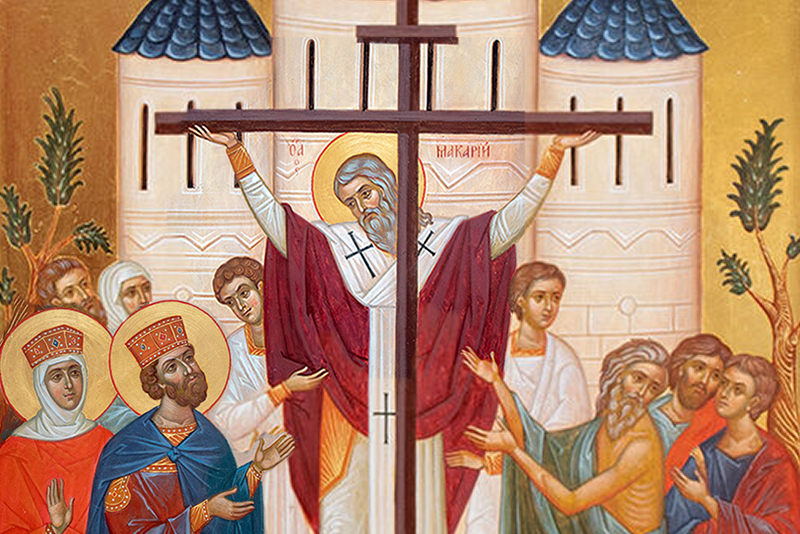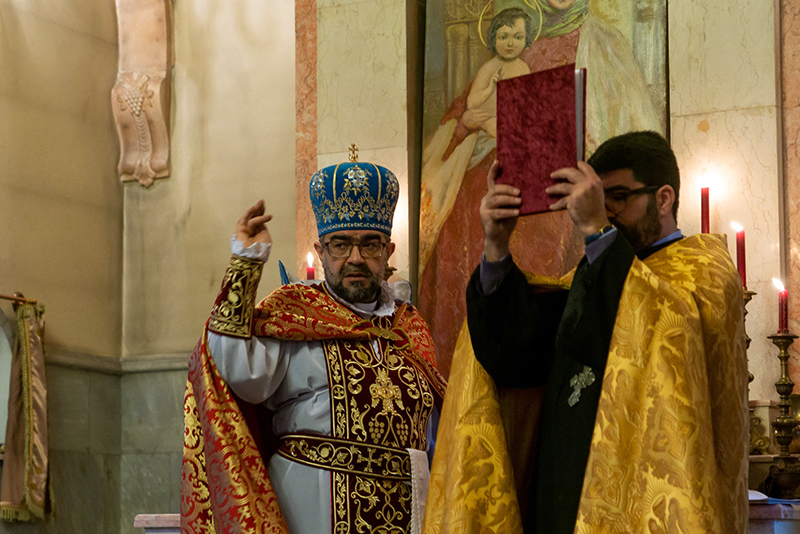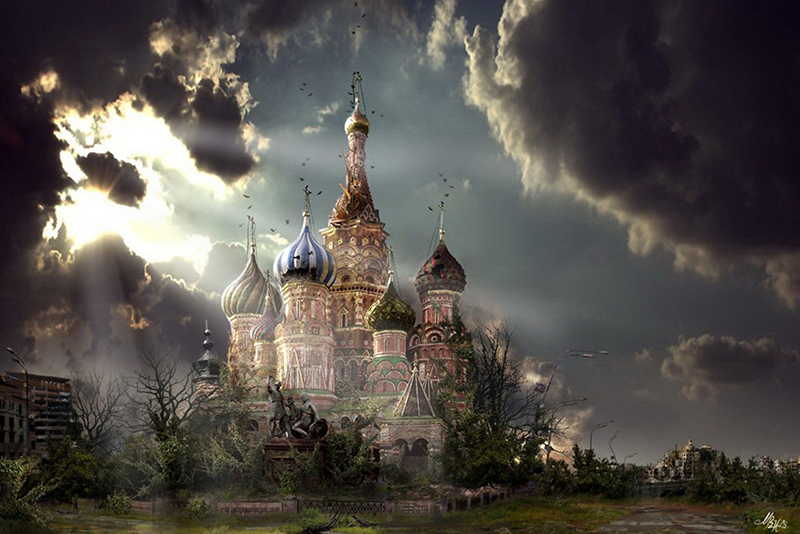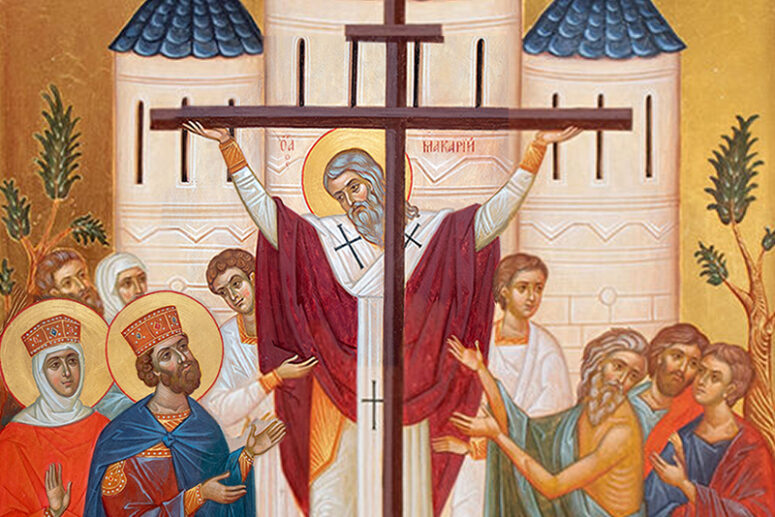
Why is the church where the relic was uncovered located deep underground? How were the nails from the crucifixion site discovered? How was the Cross placed into a reliquary, and where is it now? Find answers to these and other questions in our article.

Safekeeping the Shrine
Since the acquisition of the Cross by the Holy Empress Helena in 326, it remains (along with the Church of the Holy Sepulchre and the Shroud of Turin) one of the most sacred relics of the entire Christian world. Many legends have been appearing recently regularly announcing discoveries of the Holy Grail or the stone of the Holy Sepulcher, allegedly brought to/ and later lost in Russia, but most pilgrims still choose to head to the Church of the Holy Sepulchre in Jerusalem, where the Cross of the Lord was also kept until the 7th century.
Together with the tablet “Jesus the Nazarene, King of the Jews” found next to it, the True Cross was kept in a silver ark. Some 4th century pilgrims’ testimonies have remained describing the True Cross being solemnly brought out during the festive service on the day of the Exaltation. At the end of the all-night vigil, the ark was opened, and each of the thousands of pilgrims had an opportunity to venerate the relic. At that time the True Cross was already carefully guarded, not only from the barbarian attacks, but also from the Orthodox Christians wishing to keep a fraction of it.
Why are the Places of the Crucifixion and the Resurrection Two Steps Away from Each Other?
The actual place where the True Cross was discovered became a church. Places of the Crucifixion, the Resurrection and the uncovering of the Cross are literally within a few steps from one another. This can be explained by the coming Saturday, following the Passion of Christ. The disciples were in a hurry to wrap the Savior’s body in linen cloth and put it in the tomb before the sun sets. The Roman guards also obeyed the Jewish orders of that time and hurried to remove the instruments of the execution before the sunset, considered the datum point of a new day. The Jewish law strictly forbade carrying out executions or any related actions on Saturdays. As Christ said many times in the Gospel, the people of that time followed the letter, not the spirit of the Law and considered it possible to kill, just not on that day.
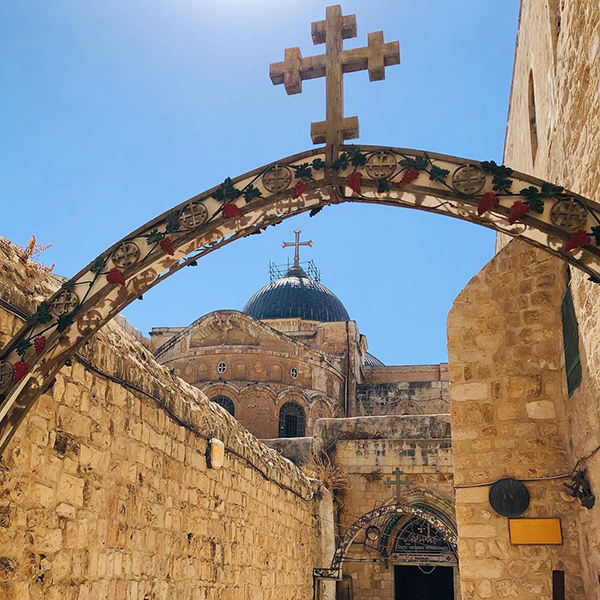
St Helena ordered the construction of a church on the site of the uncovered holy places. The closeness of the shrines and the fact that Calvary Hill was only about ten meters high made her idea feasible.
Location of the Cross
The stone part of the hill was bevelled, and an Orthodox chapel was erected on it. The deepening in the rock where the Cross was originally located has survived to this day. Today it is covered with marble, also serving to protect it from pilgrims. The Orthodox altar built atop of it is also made of marble. Churches of the Holy Land are unique places where, like nowhere else in the word, anyone can come close to the altar. There is no iconostasis, or even a solea there. Altars are erected over sacred objects that need to remain accessible to all pilgrims.
Determining the exact location of the True Cross in a place where many many convicts were executed has a remarkable history. If you look closely at the place, currently marked as Golgotha, you will see a wide crack penetrating to the very foundation of the rock. The actual place that endured the True Cross is under glass, so that everyone can see it. According to the legend, the earth shook during the execution of Christ, and the Place of the Skull (as Cavalry was also called) was so named because of the head of Adam, buried here, on which the Blood of the Savior was poured out through the split of the ground. Queen Mother Helena also knew this legend, which helped her identify the place of the True Cross among other deepenings made in the rock for other crosses.
The actual church was completed after the death of the holy queen, and the modern Church of the Holy Sepulcher, repaired and rebuilt many times in its history after fires and enemy plunders, barely has any connection with her at all.
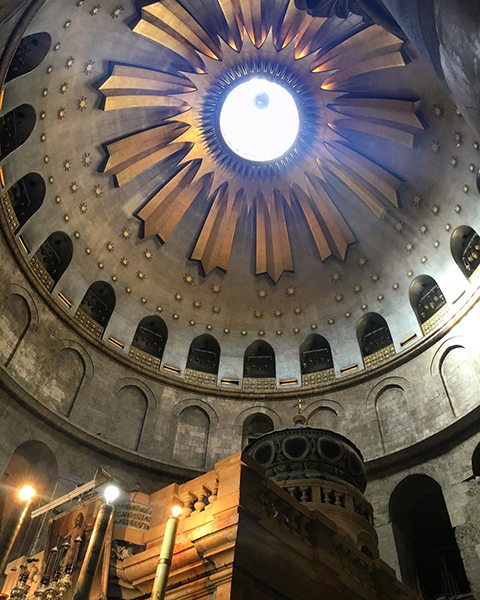
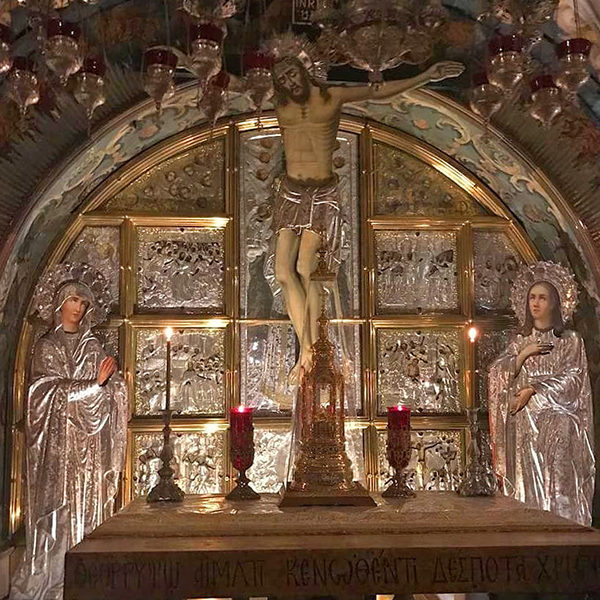
Translated by The Catalogue of Good Deeds
Source: http://gorlovka-eparhia.com.ua/krest-gospoden-istoriya-poter-i-obreteniya-1/

